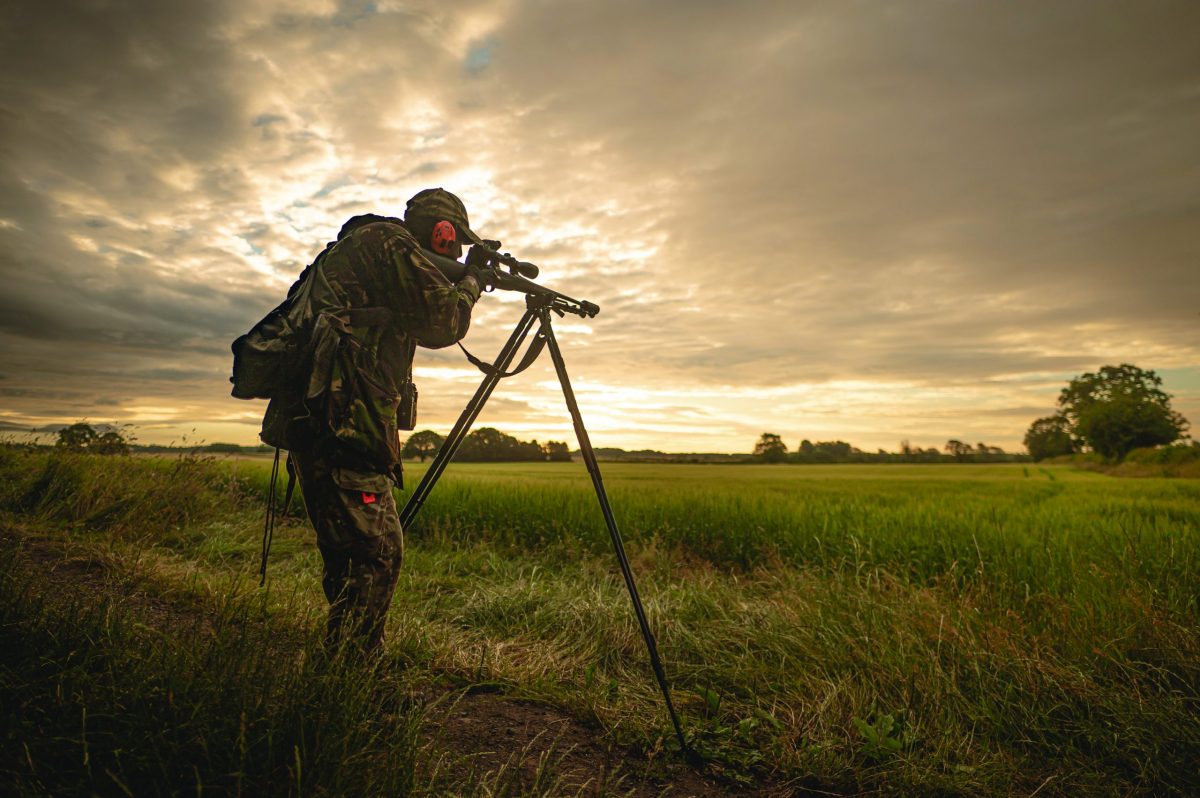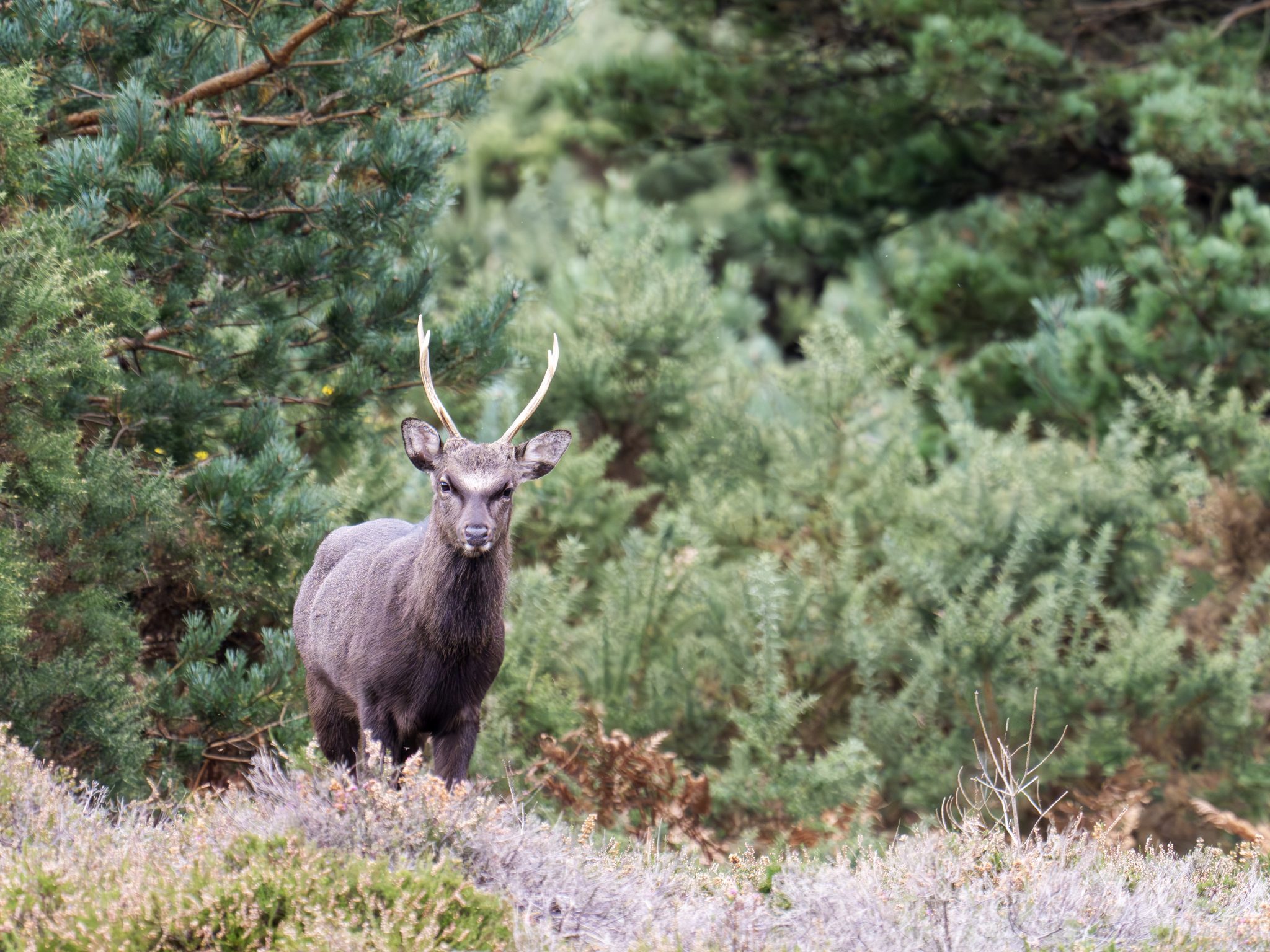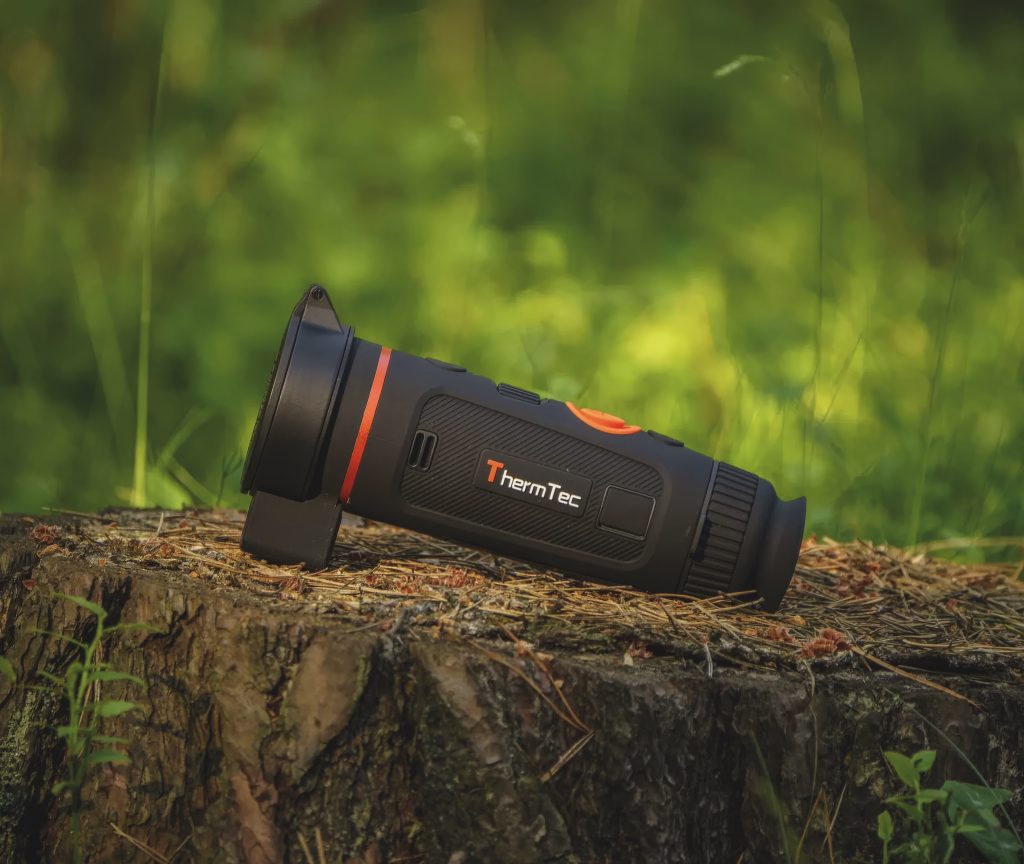Win CENS ProFlex DX5 earplugs worth £1,149 – enter here
Bushnell Fusion X rangefinding binoculars field tested by Al Gabriel

July marks perhaps the most exciting time of year for roe stalking, though it is too early for the rut and the days too long. But there is a glimmer of hope a couple of weeks away. The Glastonbury of deerstalking — that is, the British roe rut — is almost nigh. Scorching heat, the dreaded midges and gruesome ticks are on the prowl. The season has been unbearable, with limited early rut success, and summer is shaping up to be a scorcher.
If the climate scientists are correct, this summer is going to be the hottest since 1540 — the shape of things to come for the decades ahead. Nevertheless, the rut is on the horizon. That time of year when roebuck achieve maximum testicular mass for the long bender ahead.
With that physical change comes utter stupidity and unquenchable lust, and survival instincts will have to take a back seat. For the lucky ones, scars will be earned, genes will be passed on — but some will pay the ultimate price.
Early July stalking can be demoralising. Hardly anything moves, and if you do see something it is often a doe with a kid. The vegetation is waist deep and drying wheat and barley fields give away your position with ease. My attempt to improve the cull bag on my lowland ground on the outskirts of Newcastle has not been going well. To maximise my chances, I got on to the ground before first light. It was a still day with intense humidity.
I was appropriately dressed in light clothing, armed with .270 Winchester 130-gr copper bullets and my Sako A7. Given the time of year, a good dose
of anti-tick spray was a must.
On this outing, I was excited to be trying out my new Bushnell Fusion X binoculars in 10×42 with an integrated laser rangefinder (LRF). I decided to make a start on an area where I’ve seen some roe activity — I have been outsmarted by two roebucks there on several occasions. There was no wind to speak of. As I meandered along the tramlines in the wheat fields, I was acutely aware that the scorched ground was not cushioning the noise I was making. But at least there were no midges.
I briskly made my way through a couple of fields and set up an ambush at 150 yards from the treeline, with my rifle comfortably resting on five-legged shooting sticks. The sun was shining right in my eyes as this ground faces east. The inevitable consequence of that is not only the blinding sun, but also the long shadow it cast behind me. This is a type of ground that requires absolute stillness. I was particularly pleased to have spotted a majestic heron flying away as well as a yellowhammer, a species I have not seen in a long time.
Al is field testing Bushnell Fusion X rangefinding binoculars in 10×42
Disheartening
I waited and monitored with my binoculars and thermal on numerous occasions but, to my surprise, except for some songbirds and pheasants, there was no deer movement at all. It was a disheartening start to the day but not unexpected: the pre-rut is always all or nothing.
At least I have a new toy to keep me entertained. By any standard, this pair of binoculars is heavy. But that weight comes from the advanced LRF that can be accessed at a touch of a button. The 10x magnification is, in my opinion, the most appropriate magnification level for open country and clear-fell situations. The crosshairs are easy to use and target acquisition is instant. As far as LRFs go, this is my favourite to date.
My thermal imager and traditional LRF don’t even come close when it comes to speed and ease of use. The range button is softer and will no doubt come in handy on cold days. The clarity is impressive; and the Bushnell can laser up to a mile. It is waterproof-rated to survive anything — even what our northern weather can throw at it.
Pointing a riflescope at a suspected deer is never wise; binoculars are the safer option. Like most things, if you have good grounding in the art, advanced forms of imaging are the natural progression, though I still depend on the monocular on my dedicated LRF with its 6x magnification for quick confirmation, particularly for distinguishing sex. I will not be going back to a thermal-bino combination. Units get lighter and smaller every season.
I decided to try my luck on the other side of the farm. The day was getting brighter and warmer and my chances of success dwindled. I stalked along the bridle path, but I could see no heat signatures. This was one of those mornings where the deer know something you don’t. This farm has too many old rusty gates and opening them quietly is a challenge. I’ve been meaning to spray them with WD-40 but never remember to do it.
The Bushnell binos provide instant target acquisition
Right after I passed the first gate, I spotted a roe 200 yards away on the other side of the field, standing out against the lush green grass. I couldn’t establish its sex, but I suspected it was a doe. My Bushnell binos were perfect to get range and confirm — it was a doe. I couldn’t see any kid nearby with my thermal, but it seemed like a young doe.
I carried on circling my favourite patch of wood in the hope that I could catch morning feeders. Along the way, I continually glanced with my binos alongside the hedgerows. By this point, carrying a thermal and binos on my neck was starting to drag me down, a reminder of why I don’t usually carry both.
A couple of hours in, there was no buck to be found. The farmer had unexpectedly moved young cattle near the wood. I could smell that distinct stench on my approach.
Al is trying out Winchester 130-gr copper .270 ammo for the first time
Angry bull
As I made my final move towards the wood, I was greeted by an angry-looking bull that did not seem impressed. Neither was I. As I tried to find the best route, I spotted two roe on the far side of the wood. One of them was a doe and it was very likely the other was a kid. The shiny chestnut summer coat is as unmistakable as it is graceful. I did my best to ambush the unidentified roe in the direction of where they were heading, but they disappeared into the ether.
I hoped I would see the resident buck that is on my cull list this year — patrolling territories and keeping other bucks away is of the highest priority this close to the rut.
Call practice
As I was almost ready to call it a day, I thought this might be a good opportunity to dust off my roe caller and practise my call. No buck was falling for my pipe music. At this point, the humidity was quite noticeable and there was no wind. I could hear some farm equipment in the distance, which never bodes well for morning stalking. Just when I thought it was a good time to take a coffee break and reassess the situation, I spotted the farmer in the distance getting ready for the morning feed.
During my coffee break, it was apparent from what was in front of me that the atmospherics were not right. I decided to call it a day right then. At the core of deerstalking lies resilience; numerous outings end without success. This is the most difficult roebuck season I have had in recent years, a culmination of bad weather and farming activity. I take solace in the fact that all this will change in a matter of weeks, and therein lies the beauty of deerstalking. I will have to work harder during the rut, to make up for the numbers.
In stalking, the difference between success and failure is so narrow that no amount of technology and equipment can make up for what nature can throw at you.
Related Articles
Get the latest news delivered direct to your door
Subscribe to Shooting Times & Country
Discover the ultimate companion for field sports enthusiasts with Shooting Times & Country Magazine, the UK’s leading weekly publication that has been at the forefront of shooting culture since 1882. Subscribers gain access to expert tips, comprehensive gear reviews, seasonal advice and a vibrant community of like-minded shooters.
Save on shop price when you subscribe with weekly issues featuring in-depth articles on gundog training, exclusive member offers and access to the digital back issue library. A Shooting Times & Country subscription is more than a magazine, don’t just read about the countryside; immerse yourself in its most authoritative and engaging publication.







